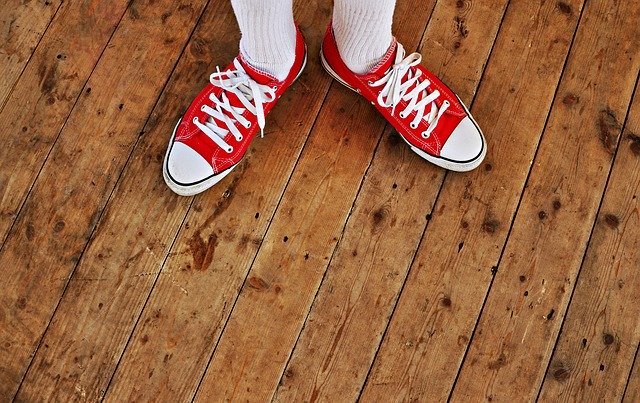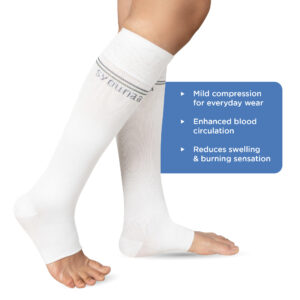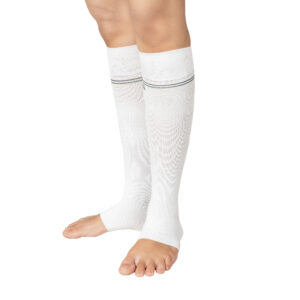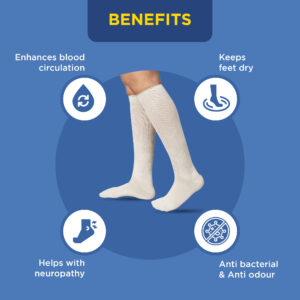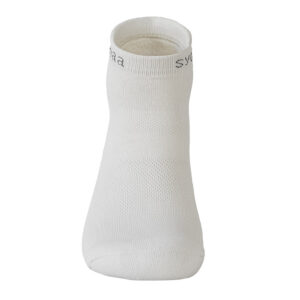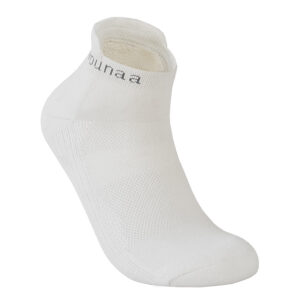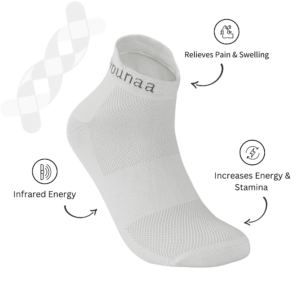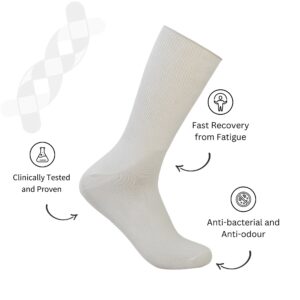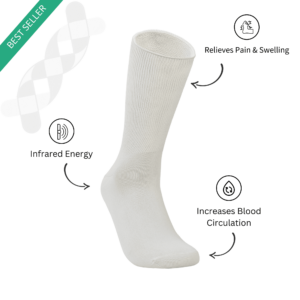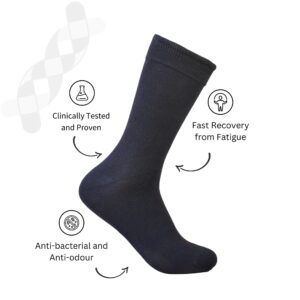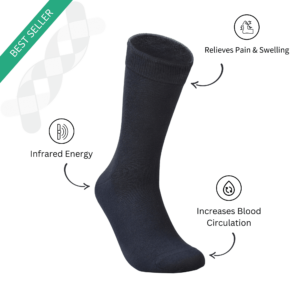Diabetic socks and compression socks – we use these terms interchangeably. The truth is there are a lot of differences between these two socks and it is very important to know your specific foot problems before buying either of them. So, what’s the difference between diabetic socks and compression socks? Let’s find out.
What Are Compression Socks?
Those with weight problems or diabetes have a condition called deep vein thrombosis or DVT. This is usually a condition where the vein collapses under the pressure of the body weight. This makes it very difficult for the feet to pump out deoxygenated blood.
When the blood can’t go back in the heart, it may cause clots and swellings around the feet.
Compression socks add a firm pressure to the feet; enough to support the collapsed veins and regain blood circulation.
Our feet are constantly battered during sporting events, especially running, hence many athletes use compression socks to give their feet firm support and prevent injuries. It even allows for a speedy recovery for those who have injuries around their feet.
When Should You Not Wear Compression Socks?
As great as they may be, compression socks do have some limitations. Here are some occasions when you shouldn’t wear compression socks.
When You Have Foot Ulcers
Compression socks add pressure on your feet. When you have a foot ulcer or a cut, the extra pressure may cause more blood or puss to expel from the infected area.
Diabetics often have compromised senses around their feet because of peripheral neuropathy and if you are prone to foot ulcers it is the worst time to wear compression socks. You won’t know when you have bled out from your feet!
2. When You Are Sleeping
When you are standing up, the veins on your feet have to work against gravity to take the blood to the heart but when you are sleeping, your feet don’t need that support. In fact, wearing it for too for 6-8 hours while you’re sleeping can increase the risk of cardiovascular problems.
3. If You Are Irritable On Your Toes
Compression socks don’t usually have seamless stitching. Hence if your feet are very sensitive, the stitch around the toes and the sides of your feet may cause a rash or an infection.
What Are Diabetic Socks?
Diabetic socks are usually smart socks that are made especially for a diabetic foot. Now, some diabetic socks are better than others, but the general function for diabetic socks are to adapt to the form of your feet, absorb moisture, prevent irritability and improve blood circulation.
While compression socks can be used for a variety of foot conditions, diabetic socks are made keeping a diabetic’s problems in mind. Hence, in most cases, diabetic socks are better for diabetics than compression socks.
Why Are Diabetic Socks Ideal For Diabetics?
There are many reasons why you should consider wearing diabetic socks. Here are a few reasons why they are ideal for you:
Promote Blood Circulation
Good quality diabetic socks are designed to oxygenate your feet. Different socks use different technologies but they all have the same goal.
Syonaa socks, for example, convert your body heat to infrared energy. This energy is then re-emitted to your body to promote blood circulation, reduce swelling and allow natural healing.
2. Better Sleep
Unlike compression socks, diabetic socks actually help you sleep. If you have trouble sleeping because of diabetic foot problems, a good pair of diabetic socks will relax your body and help you sleep.
One of the most common sleep problems that diabetics have is restless leg syndrome. RLS is usually caused by peripheral neuropathy. It creates a false sensation of ants crawling on the feet or bitting the patient.
These sensations are caused because there isn’t enough fresh oxygenated blood circulating around the feet. Since diabetic socks are designed to increase blood circulation, diabetics usually don’t face problems with RLS.
3. Foot Ulcers
Foot ulcers are so common in diabetics and it’s the leading cause of foot amputations. Most foot ulcers are caused because of the lack of blood circulations. Sometimes they develop from a minor cut because there isn’t enough fresh blood around the feet to facilitate healing.
As we said earlier, diabetic socks are designed to increase blood flow hence they reduce the occurrence of foot ulcers. They even heal small ulcers on your feet. Remember that diabetic socks do not replace the professional consultancy of a podiatrist hence if the infection has not subsided within a day, you must consult your doctor.
4. Dryness Around The Feet
Sometimes, accumulated sweat can cause an infection around your feet. Diabetic socks are usually very absorbent. Some of them even have extra padding around the soles.
5. Seamless Stitching
Since diabetic feet are so prone to infection, diabetic sock manufacturers take extra effort to stitch the fabric together. The seams are stitched in such a way that they don’t come in contact with the skin at all.
This reduces the chances of infection and helps you live a normal life.
So, here are some major differences between diabetic socks and compression socks. They are not interchangeable and usually because of all the pros diabetic socks are ideal for those with diabetes.

